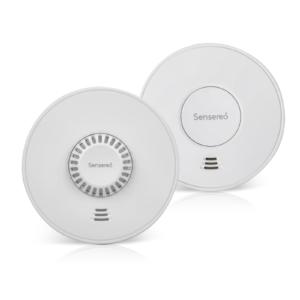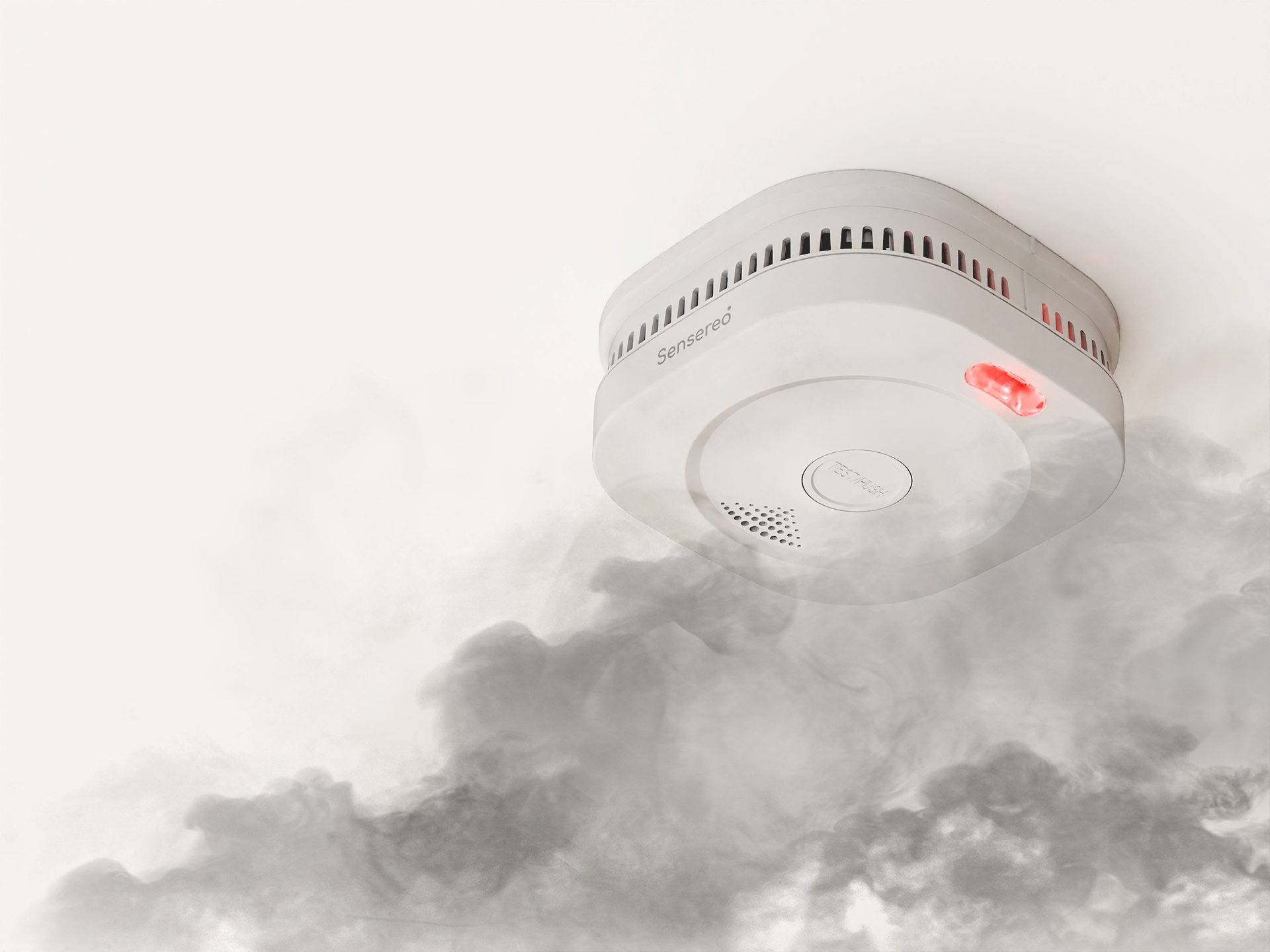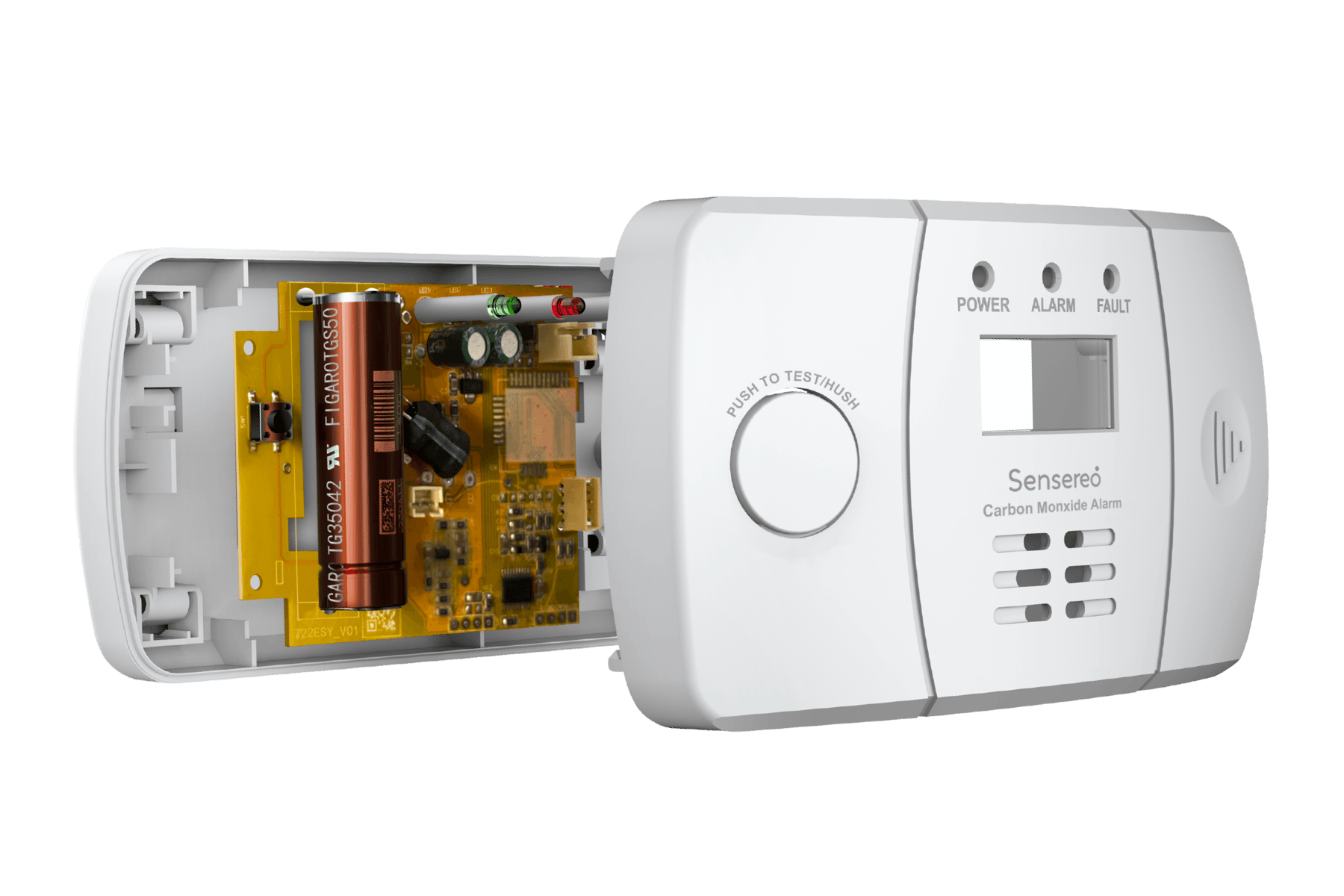Brief Summary:
The piercing, solitary beep of a smoke alarm is a sound no one wants to hear. But what if a fire starts on a different floor of your home, and that single alarm’s warning doesn’t reach you in time? This is the core problem that a modern, interconnected system is designed to solve. Wireless smoke alarms are revolutionizing home safety by linking all the alarms in your house into a single, unified network. This technology ensures that when one alarm detects smoke, every alarm sounds simultaneously, providing an early and critical warning that could save lives. But like any technology, wireless systems come with their own set of advantages and drawbacks. This guide will break down what these systems are, how they work, and the key pros and cons to help you decide if a network of interconnected smoke detectors is the right choice for your home.

What Are wireless interconnected smoke alarms?
At its simplest, a wireless smoke alarm is a device that can communicate with other alarms in its network without relying on a physical wire. Unlike traditional standalone alarms that only sound a local siren, a wireless system creates a chain of communication.
This interconnectedness is a monumental leap in home safety. It means that if a fire starts in the basement while you are sleeping in a second-floor bedroom, the alarm in the basement will instantly trigger the alarm outside your bedroom. The result is a unified, whole-house warning that provides a critical head start for evacuation. The goal of an interconnected fire alarm system is to ensure that no one in the house misses the warning, regardless of where the fire starts.
How Do RF Smoke Alarms Work?
The technology that powers this communication is primarily radio frequency (RF). You can think of an rf smoke alarm as a two-way radio with a single purpose: to receive a signal from another alarm and, if that signal indicates a fire, to sound its own siren.
The process is as simple as it is powerful:
Detection: A single alarm detects smoke or a rapid rise in heat.
Transmission: The detecting alarm sends a wireless radio signal to all other paired alarms in the network.
Activation: Upon receiving the signal, all other alarms in the network instantly begin to sound, creating a cascade of warnings throughout the house.
While Wi-Fi and Bluetooth are also used in some smart alarms, RF technology is generally preferred for the primary safety communication between detectors because it is a dedicated, low-power, and highly reliable signal that is less prone to interference and network lag.
Pros of wireless interconnected smoke alarms
From my own experience assisting homeowners, I’ve seen numerous strong points when it comes to installing wireless smoke alarms:
- Easy & cost-effective installation: Forget the hassle of running wires through walls or ceilings! Wireless detectors can often be installed as a DIY project, so you don’t need to hire an electrician. This makes them perfect for apartments, older houses, or anyone dreading holes in their fresh paintwork.
- Flexible placement: With no wires tying them down, you can position them wherever coverage is most needed, or move them as your home layout changes.
- Full interconnectivity: Many interconnected smoke detectors utilize wireless communication. If a single detector senses smoke, every alarm in your network sounds off at once—an option that’s a real lifesaver in larger homes.
- Low maintenance: Wireless models generally rely on long-life batteries and need very little upkeep beyond semi-regular battery checks, vastly simplifying ongoing care.
For a blend of simplicity, safety, and versatility, wireless smoke alarms are hard to beat.

Cons of wireless interconnected smoke alarms
Of course, as with any technology, wireless smoke alarms and rf smoke alarms aren’t perfect. I’ve found that there are a few important points to consider before making the switch:
- Higher upfront cost: Wireless units do tend to be pricier than basic wired detectors out of the box, even though you’ll probably save on installation fees.
- Limited wireless range: Current technology usually covers up to about 30 meters, so big houses or those with thick brick walls can push the limits of wireless reliability.
- Potential signal interference: This problem crops up more often than you’d think, especially in homes with lots of metal framework or electronic devices. Everything from microwaves to Wi-Fi routers can meddle with RF signals, possibly resulting in a missed alert.
Technology keeps improving, but it’s smart to weigh these possible downsides carefully against the many benefits.
Hardwired vs. Wireless: A Quick Comparison
| Feature | Hardwired with Battery Backup | Wireless with Battery |
| Interconnectivity | All alarms are interconnected via wiring. | All alarms are interconnected via a wireless signal (RF). |
| Power Source | Primary power from home’s electricity. | Primary power from batteries. |
| Power Outages | Works using a battery backup. | Continues to work normally. |
| Installation | Requires an electrician and wiring. | Simple DIY installation. |
| Best for | New construction or major renovations. | Existing homes, apartments, or renters. |
Making the Right Choice for Your Home
The choice between a standalone, hardwired, or wireless system comes down to your living situation and your priorities.
If you are building a new home, a hardwired system with a battery backup is the gold standard. However, for the vast majority of homeowners and renters, a wireless system is the ideal choice. It provides the same critical safety feature of interconnected smoke detectors without the cost and complexity of a professional installation.
By investing in a network of high-quality wireless smoke alarms, you are choosing to proactively protect your entire family, ensuring that no one is left without a warning.
Frequently Asked Questions (FAQs)
Q1: What are the best interconnected smoke detectors?
A1: The “best” detector depends on your needs, but top-rated brands that offer reliable interconnected systems include Google Nest Protect, First Alert, and Kidde. When choosing, look for models with a 10-year sealed battery, a dual photoelectric/ionization sensor for detecting both types of fires, and smart features like voice alerts and app notifications.
Q2: How do wireless interconnected smoke alarms work?
A2: Wireless interconnected smoke alarms work by using a radio frequency (RF) signal to communicate with each other. When one alarm detects smoke or heat, it sends a wireless signal to all other alarms in the network. This triggers every connected alarm to sound in unison, providing a full-house alert regardless of where the fire started.
Q3: What are some common interconnected smoke alarms troubleshooting tips?
A3: If your interconnected alarms are going off without a clear cause, here are a few steps to troubleshoot:
Identify the Source: Look for a blinking light on one specific alarm—this is often the one that triggered the network.
Clean the Unit: False alarms can be caused by dust, insects, or debris. Gently vacuum or clean the detector to remove any particles.
Check Power: Ensure the batteries are fresh, or if it’s a hardwired unit, check that the circuit breaker hasn’t been tripped.
Check for Environmental Triggers: Steam from a bathroom or smoke from cooking can trigger an alarm. Relocate the unit if it’s too close to these sources.
Q4: Are interconnected smoke alarms required by law?
A4: The legal requirement for interconnected alarms varies significantly by location. In many places, they are a legal requirement for new construction. However, in some regions, such as Scotland and parts of Australia, interconnected alarms are now legally required in all residential homes, regardless of when they were built. It is always best to check your local and state building codes.
Ready to upgrade your home safety with a unified system?
Explore our range of interconnected and smart home safety solutions to find the perfect alarm system for your home.




